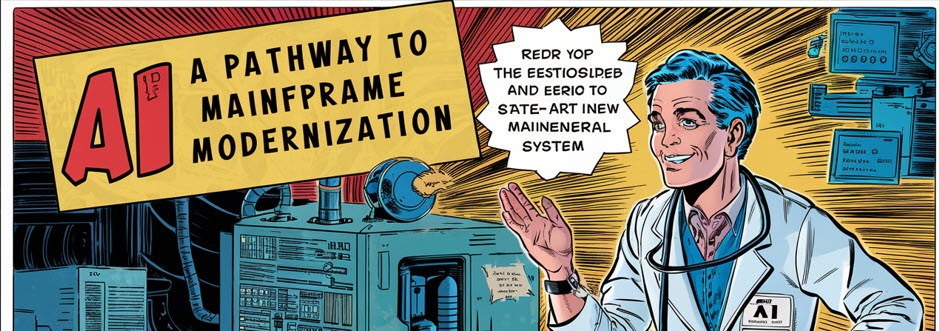For decades, the Mainframe has served as the backbone of many institutions, providing a robust and reliable system of record that organizations have depended on. However, as Mainframes age, so does the ability to maintain the software running on these systems. This introduces a level of risk that necessitates moving off the Mainframe and onto modern hardware and software platforms.
The Challenge of Transitioning from Mainframes
Transitioning from Mainframes involves reliably capturing the existing business logic and implementing it in a new system. This is a significant challenge and a common fear among organizations. Many Mainframe modernization projects have stalled due to the complexity of deciphering the existing business logic embedded in Mainframe code. Although running Mainframe code in a virtual environment on modern hardware or the cloud is an option, it often merely postpones the inevitable issues of software maintenance, updates, fixes, and new features. Nonetheless, for some organizations, virtualizing the Mainframe environment might be a viable short-term solution. It is crucial to consider this approach when planning Mainframe modernization.
Leveraging AI to Aid Mainframe Modernization
Artificial Intelligence (AI) presents a promising solution for moving off the Mainframe by efficiently capturing the existing business logic. AI models, particularly those trained on COBOL, can comprehend and translate the current business logic embedded in Mainframe code. This capability allows organizations to gain insights into the business logic without relying solely on human efforts to unravel the code. AI can analyze the entire codebase and facilitate a structured domain dissection.
AI-Driven Business Logic Dissection and Visualization
AI can enhance the understanding of existing business logic by generating visualizations of the codebase. These visualizations help define strategies for separating system components into domains, which can then be developed into new codebases as independent services. AI can assist in translating the business logic into new services and generating test cases. By identifying domains that can be separated into services and determining the associated business logic, AI can facilitate the generation of code in the target language.
The Role of Trained AI Models
To effectively modernize Mainframe applications using AI, it is essential to employ well-trained models that focus on COBOL and the target language. Utilizing advanced AI models can provide unprecedented insights into Mainframe code, which were previously unattainable through human efforts alone. AI has the potential to unlock the value embedded in Mainframe code and ensure a smooth transition to modern platforms.
Conclusion
AI offers a transformative opportunity to move off the Mainframe, addressing the complexities and risks associated with aging systems. By leveraging AI's capabilities in understanding and translating Mainframe code, organizations can capture existing business logic, visualize domain separations, and generate new services. This approach not only facilitates modernization but also ensures the preservation and enhancement of the value within the Mainframe codebase. AI stands as a pivotal tool in unlocking the potential for Mainframe modernization and ensuring long-term operational efficiency.

